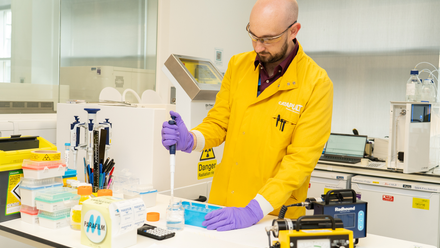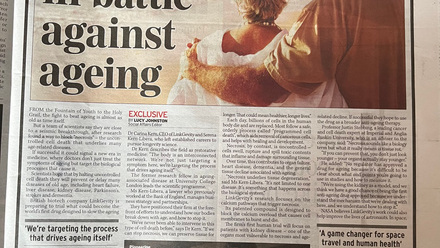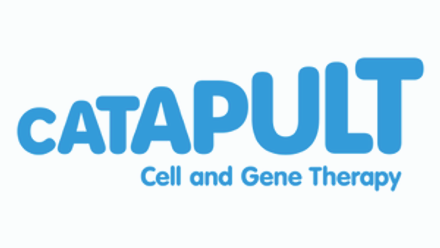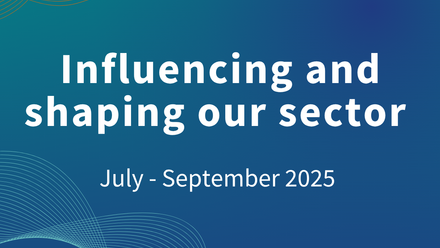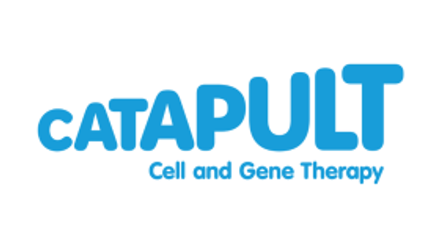Spotlight on Aldevron: bringing next-generation CRISPR to life

In this spotlight feature, Bev Cameron, Sales Director for EMEA & APAC at Aldevron, shares how the company is helping accelerate next-generation genomic medicines - from personalised CRISPR therapies to scalable platforms that support innovators across the development journey. Bev also shares Aldevron’s proudest achievements, key industry trends, and how collaboration within the BIA community can help bring life-changing treatments to patients faster.
Tell us about your company and how you support the life sciences sector
Aldevron has been part of the life sciences story for more than 25 years. What started in 1998 as a small lab supporting early-stage research has grown into a trusted partner helping scientists around the world develop gene therapies, vaccines, and other groundbreaking treatments.
We’re not just a CDMO; we’re innovators and see ourselves as a partner who is constantly finding new ways to improve how therapies are made. This could be by increasing our platform process efficiencies or making our products more accessible to our partners. Our goal is simple: to help bring life-changing therapies to patients faster.
What truly drives us is collaboration. Every day, we get to work alongside incredible scientists who are shaping the future of medicine and that keeps us inspired to keep pushing boundaries.
What project or achievement is your company particularly proud of?
One story that really captures who we are and what we stand for is the work we did on the Baby KJ project.
The Children’s Hospital of Philadelphia and the University of Pennsylvania approached us, along with our Danaher sister company IDT, to help manufacture a personalised CRISPR therapy for a young patient with a rare genetic disorder. There was no existing cure, and time was critical.
Together, we were able to develop and manufacture a completely custom mRNA-based therapy in just six months, about three times faster than what’s typically possible. The project required new guide RNA, a new mRNA-encoded base editor, and a custom LNP formulation; truly pioneering work.
The therapy was recently featured in The New England Journal of Medicine and recognised as a finalist for the Fierce Life Sciences Innovation Awards. But the real achievement is what it represents: proof that personalised, “N of 1” gene therapies can be developed safely, effectively, and quickly.
Now, as we seek to expand the success of our work globally, we’re actively engaging in new conversations and collaborations with groups across Europe. Our local specialists are open to conversations with new and existing partners working to advance innovative genomic medicines.
What trends in the life sciences sector are you most excited about or closely tracking?
There’s so much innovation happening right now that it’s hard to choose just one area, but the advances in non-viral gene editing and next-generation CRISPR technologies are especially exciting.
We’re seeing the emergence of new enzymes and base editors that are faster, more precise, and potentially safer than ever before. These innovations have the potential to transform how we treat genetic diseases and open the door to therapies that were previously unimaginable.
At Aldevron, we’re developing solutions that help make those ideas a reality, like Nanoplasmid™ and HiCap and our mRNA drug product development platform in collaboration with our sister Op Cos IDT and Cytiva, with the ultimate aim of simplifying development, streamlining manufacturing, and bringing quality to every stage of a program, from discovery through to commercial production.
Why did you decide to join the BIA, and how do you hope to contribute to the community?
The BIA plays such a vital role in connecting and strengthening the UK life sciences ecosystem. For a company like Aldevron, whose mission is all about enabling innovation, being part of that community is essential.
When I joined Aldevron as the first employee outside the US, based here in the UK, one of my very first decisions was to become a BIA member. Cytiva, our Danaher sister company, has been a long-standing supporter of the BIA, and it made perfect sense for Aldevron to join that conversation.
We see our role as both partner and enabler, helping innovators in cell and gene therapy move from discovery through clinical development and, ultimately, to commercial success. Being part of the BIA gives us the platform to collaborate, share ideas, and learn from the incredible innovation happening across the UK and beyond.
How does your work help accelerate innovation in UK life sciences?
A big part of what we do is helping simplify and streamline the development process for researchers and developers. Our new solutions, like HiCap, Nanoplasmid, mRNA, and Alchemy, are all designed to make that journey faster and more scalable, without compromising on quality.
We’re focused on bringing the same high standards used in commercial manufacturing to the earliest stages of development. That consistency saves time, reduces costs, and helps our partners move forward with greater confidence, from proof of concept to production.
By offering these integrated, ready-to-scale solutions, we’re helping UK innovators get to clinic and market faster, and that’s what drives the sector forward.
If you could give one piece of advice to an emerging life sciences company, what would it be?
Start with the end in mind — and if you can, don’t compromise on quality for the sake of cost.
It’s tempting, especially early on, to take shortcuts to save time or money, but quality decisions made early have a huge impact later. Building a foundation that’s robust, compliant, and scalable from the start will save you a lot of time, money, and stress down the road.
And don’t underestimate the power of partnership; finding the right collaborators who share your values can make all the difference in bringing a vision to life.
What makes the UK life sciences landscape an exciting place to work?
The UK has an incredible combination of world-class science, forward-thinking policy, and a thriving network of biotech and academic collaboration. The Life Sciences Sector Plan sets an ambitious goal: to make the UK the number one life sciences economy in Europe by 2030 and number three globally by 2035, and you can feel that momentum everywhere.
It’s a community that thrives on innovation, agility, and purpose. Being part of that environment where great science meets great people is genuinely inspiring.
If you could invite any scientist or entrepreneur to dinner, who would it be and why?
I’d invite Marie Curie, because she’d know how to radiate brilliance at the dinner table while probably critiquing the half-life of the wine.
But on a serious note, her relentless curiosity and courage to push scientific boundaries, often against enormous odds, are qualities that still define the best innovators today. I think she’d have plenty to say about how far we’ve come, and how much further we can still go.

